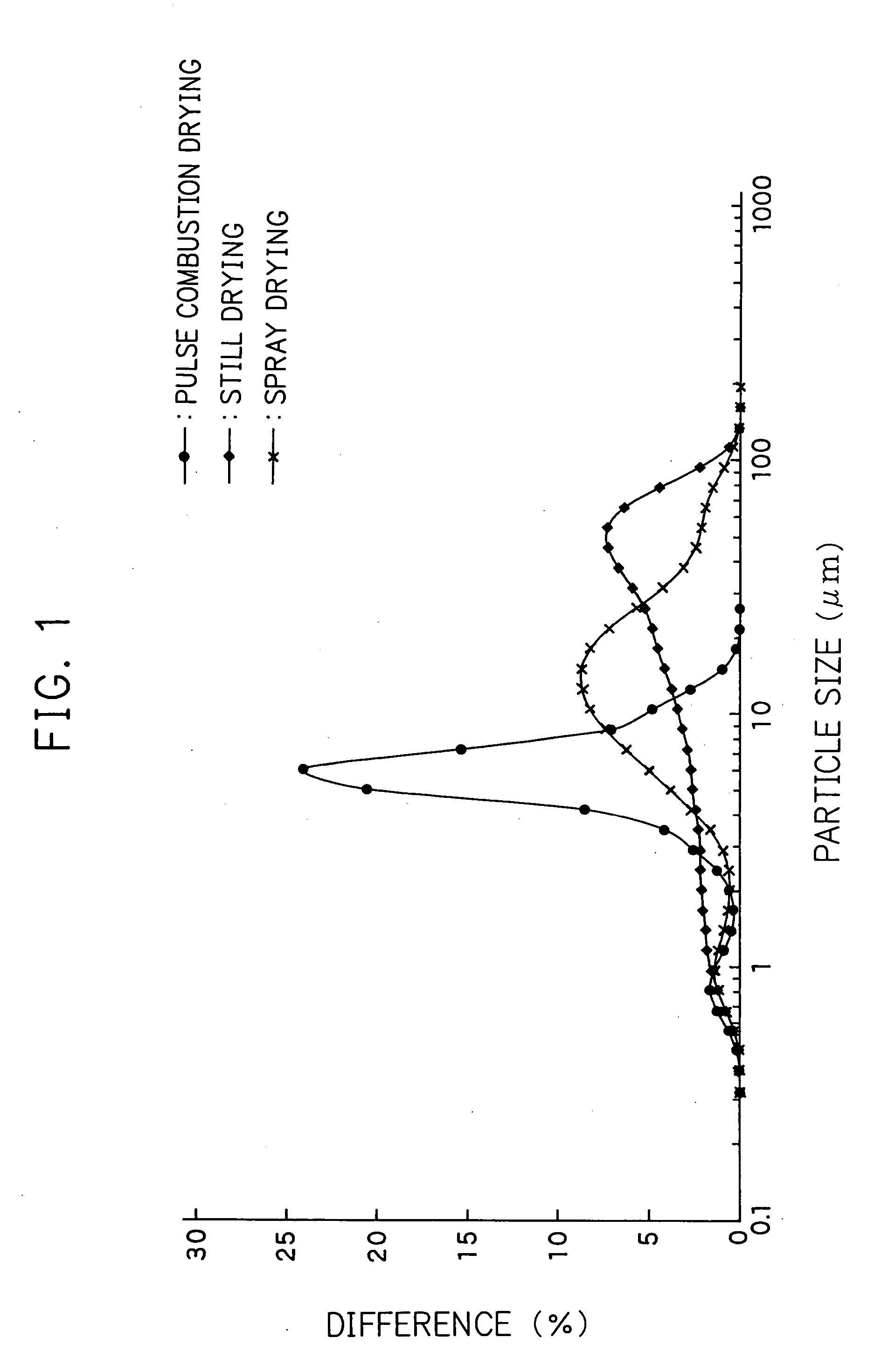Inorganic fine particles, inorganic raw material powder, and method for production thereof
a technology of inorganic raw materials and fine particles, which is applied in the direction of drying machines, lighting and heating apparatus, furnaces, etc., can solve the problems of drying and preparing fine particles, difficult to maintain the homogeneity of composition, and affecting the quality of the final product, etc., to achieve the effect of short time and suppressing the agglomeration action
- Summary
- Abstract
- Description
- Claims
- Application Information
AI Technical Summary
Benefits of technology
Problems solved by technology
Method used
Image
Examples
example 1
[0072] The hydrolyzed slurry obtained above was dried by pulse combustion. As the pulse combustion drying machine, Hypulcon® 25 model made by Pultech Corporation was used. The pulse combustion gas generated by the pulse combustion drying machine has frequency of 550 Hz, pressure amplitude of ±0.8 kg / cm2, sound pressure of 145 decibel and contact gas temperature of 280° C. The slurry was dried under conditions of inlet temperature of 190 to 200° C. and outlet temperature of 80° C. and the dried matter was sieved by a 200 mesh stainless steel wire mesh sieve. The particle size of the sieved particles was measured. The variation coefficient regarding the particle size distribution of the particles was 0.45. Subsequently, the powder was calcinated at 800° C. and 1000° C. The particle size and the BET specific surface area of the calcinated article were measured. Thereafter, the calcinated article was pulverized for a given time to obtain a pulverized article. The particle size of the pu...
example 2
[0073] The neutralized coprecipitated slurry obtained above was dried by pulse combustion. The pulse combustion drying machine and the pulse combustion gas generated thereby were the same as in Example 1. The obtained dried matter was sieved by a 200 mesh stainless steel wire mesh sieve in the above manner. The particle size of the sieved fine particles was measured. The variation coefficient was 0.63. Subsequently, the powder was calcinated at 800° C. and 1000° C. The particle size and the BET specific surface area of the calcinated article were measured. Thereafter, the calcinated article was pulverized for a given time to obtain a pulverized article. The particle size of the pulverized article was measured. The results are shown in Tables 1 and 2.
example 3
[0074] The experiment was conducted in the same manner as in Example 1, except that the concentration of the precipitate in the hydrolyzed slurry was 40% by weight converted to dried matter. The variation coefficient of the particle size of the obtained fine particles was 0.77.
PUM
 Login to View More
Login to View More Abstract
Description
Claims
Application Information
 Login to View More
Login to View More - R&D
- Intellectual Property
- Life Sciences
- Materials
- Tech Scout
- Unparalleled Data Quality
- Higher Quality Content
- 60% Fewer Hallucinations
Browse by: Latest US Patents, China's latest patents, Technical Efficacy Thesaurus, Application Domain, Technology Topic, Popular Technical Reports.
© 2025 PatSnap. All rights reserved.Legal|Privacy policy|Modern Slavery Act Transparency Statement|Sitemap|About US| Contact US: help@patsnap.com



